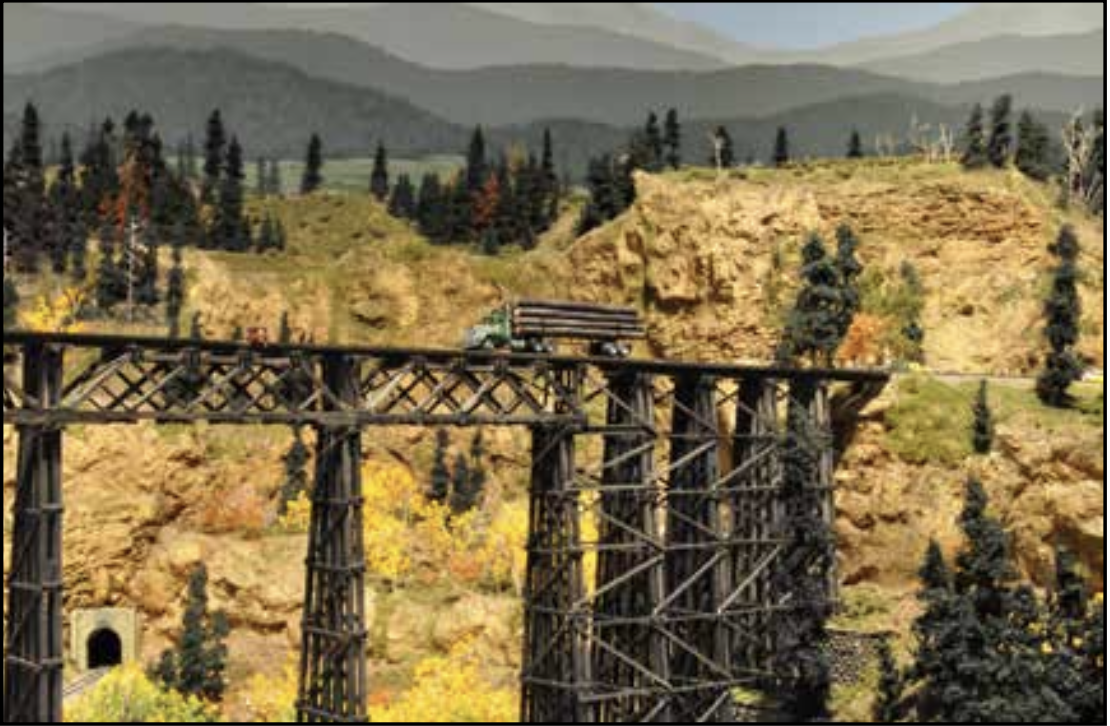Spring Projects
Robert Nastan
The Museum has a number of projects underway or in the planning stage to improve the visitor experience and to upgrade the buildings and site.
On the Mainline
The Front Entry Plaza is under construction. This project is to better identify the front entry to the Museum and to provide a place for visitors to linger in good weather. The pavers are down along with the foundations for the bronze statues donated by Al Frank and the benches. The benches are in the warehouse requiring some assembly. Bench and statue installation, landscaping, irrigation, and fencing are coming.
High Speed Internet is in the process of being installed by Allo Communications. Fiber is in the Museum building. Allo will be installing cabling the Week of April 3rd and network equipment installation is scheduled for the week April 10th. This assumes nothing will side-track the process. It is planned to have a high capacity WiFi network for visitors and the volunteer staff. This will be on network separate from the Museum’s WiFi and Ethernet service
The City of Greeley will be installing a decorative fence along the SE property line. This primarily a safety measure as people are using the Museum’s property to cross the Union Pacific tracks and to access 13th Street. This is an effort to get pedestrians to use the signalized 10th Street crossing. The fence bid has been awarded by the City. Tree removal has been done. The next steps are to finalize the fence location and to prepare final grade.
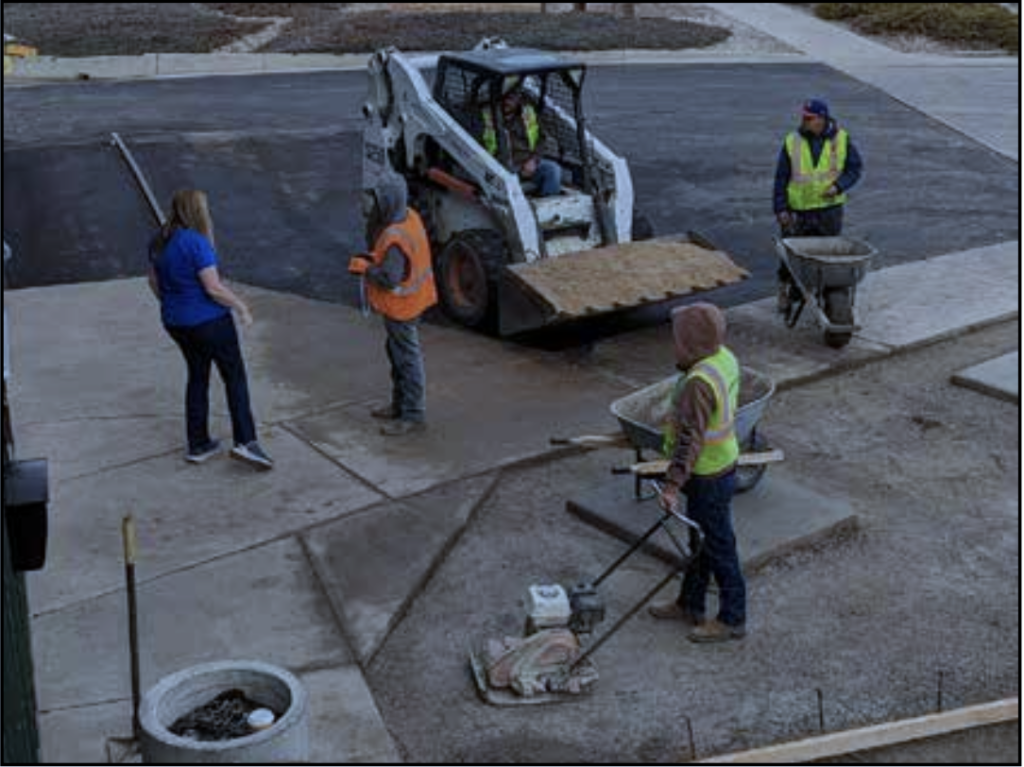
Ready to Depart
The XCEL Energy poles, guy wires and anchors that provide the service to both the main museum building and the south building, (Lyster Warehouse) intrude into the area between the two buildings. It appears an agreement has been reached to relocate the poles and the services. This is an expensive endeavor as the Museum will be paying for the relocation and will also have to pay to have new electric services installed to the museum and to the annex. However, there is an issue that may cause this effort to derail. This work needs to be done before other projects can move forward.
Staging Tracks
Between the Museum and the Lyster Annex, an outdoor courtyard area is planned for the proposed garden railroad, picnic area, UP rail viewing area, and children’s play area. To prepare the courtyard for development and the garden railroad, the following need to be classified into a logical order and sent down the main.
Track 2 is the establishment of grade in the courtyard area. The area needs to drain rain water or snow melt, the under- ground electric service and the irrigation lines need to be installed. The location of the courtyard fencing and access to utilities must be determined.
Sitting on Track 3 are improvements to the Lyster Annex that will allow staff better access to the building, provide power and light- ing to the courtyard, and a staging area for the garden railroad. The improvements include a new door on the east side, electrical upgrades, WiFi, painting of the exterior walls, and the painting of a mural on the north wall.
The garden railroad is idling on Track 4. The fill to establish the rough grade for the layout is in place. However, Track 1, 2, and 3 freights are holding up the Garden Railroad Express. Utilities and drainage are blocking the mainline.
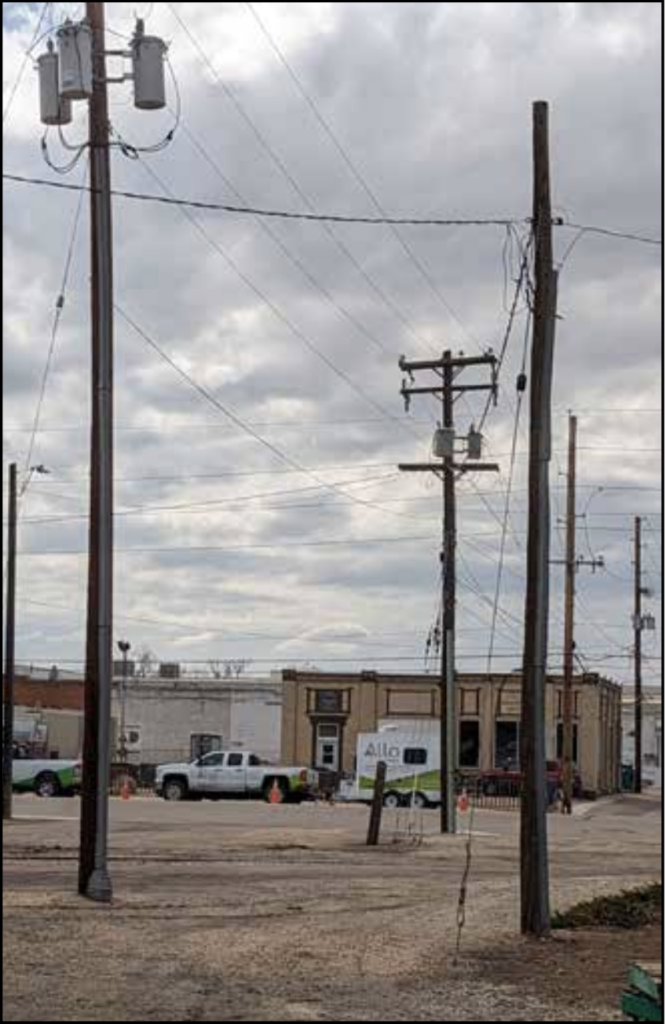
In the Yard
The Museum is the process of working with an outside organiza- tion to provide WEB-based, real-time viewing of the UP traffic on the line next to the Museum. Three cameras have been proposed. The cameras’ best location is on the property line due east of the SE corner of Lyster. The City’s fence project needs to clear the signal for this to go forward on the mainline.
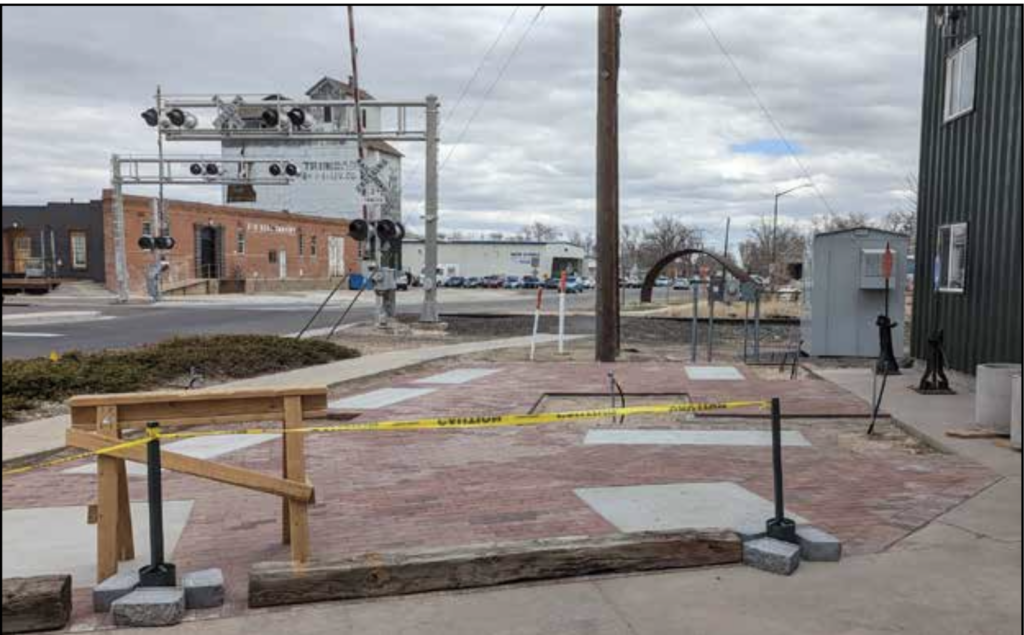
Unassigned
The development of an overall site and landscaping plan is in the discussion stage. The Greeley Garden Club has offered to help. Markley Designs is planning a site survey to locate and record the buildings, railroad ROWs, and other facilities on the Museum property.
G Scale Layout Update
Robert Linton
The development of an overall site and landscaping plan is in the discussion stage. The Greeley Garden Club has offered to help. Markley Designs is planning a site survey to locate and record the buildings, railroad ROWs, and other facilities on the Museum property.
The Northern Colorado Garden Railroaders club is work- ing closely with CMRM to create an interactive area to view and experience G Scale, Garden Railroading. At this time, we have designed a potential layout area north of the Lyster Annex. Several truckloads of fill dirt have been dumped in this area and have been settling over the Winter.
A train storage and staging area will be created inside the annex building. The construction of shelving units is partially completed. Dioramas are being constructed of period appro- priate buildings and are nearly complete. Trains are being weathered and put together for their eventual use.
We have raised money through the sale of donations and through a generous gift from the Centennial Rotary Club. Work will continue to move forward as other outside projects and permitting issues are taken care of. We are hopeful that we will be running trains before the end of summer.
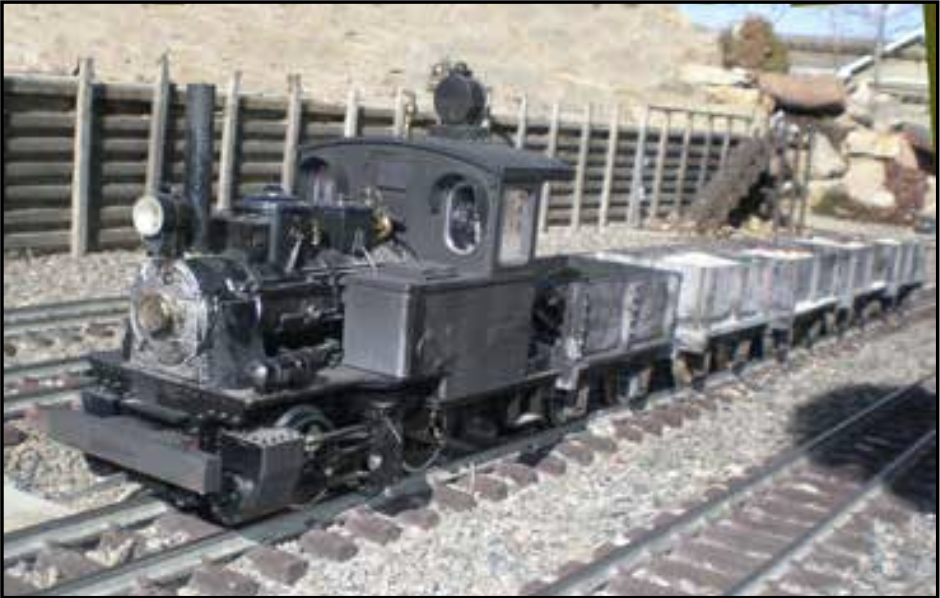
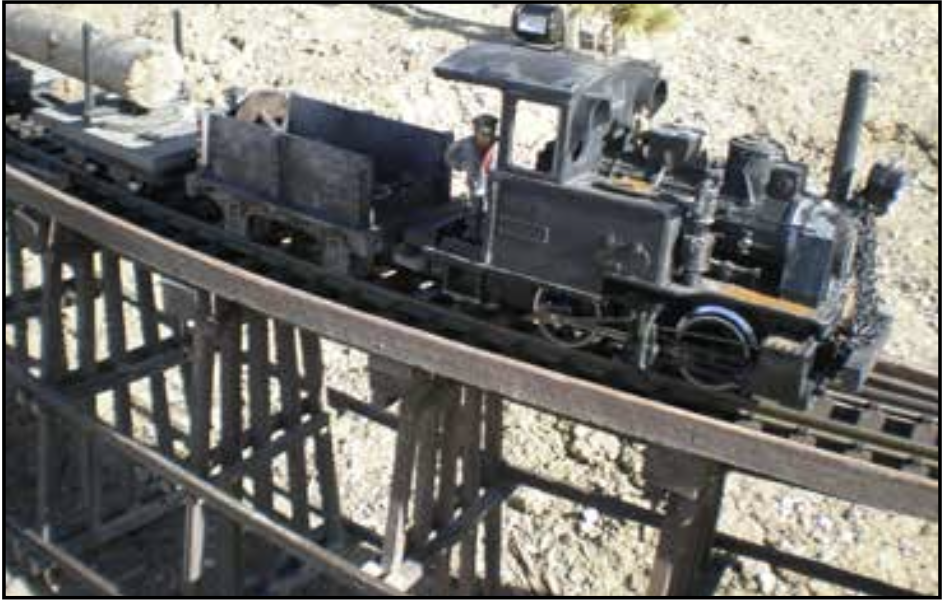
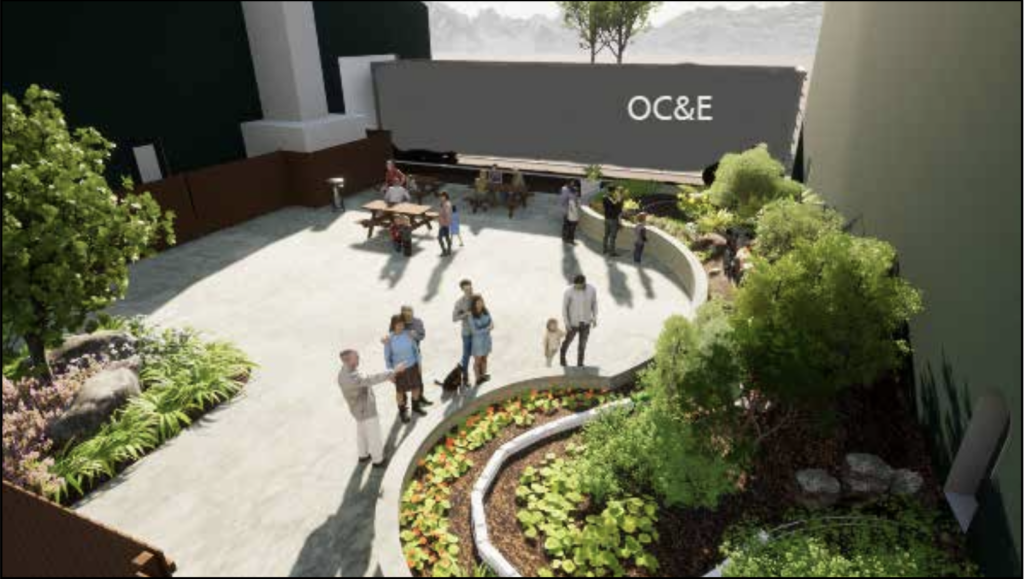
We’re hiring!
Well not really. But we have heard that there are many volunteers that would like to help out more at the museum.
What can you do? A sign-up sheet was recently created and is currently on the Dispatcher’s counter at the museum. For those of you who haven’t been there lately but would like a reason to come more, you can sign-up remotely. Take a look at the list below and if there’s anything you would like to help with, send an e-mail to cmrmeditor@gmail.com.
Less than Car-Load Stuff
From Amy Dugan, Assistant Director:
The Colorado Model Railroad Museum had an amazing friend and benefactor in Al Frank. Al was a man of many talents, pas- sions, and hobbies. He loved everything to do with railroads – their construction, history, and preservation – and enjoyed educating the public.
In 2021, Al gifted the museum with 3 beautiful bronze statues to grace the front entry area. We are so pleased to dedicate this area as the Al Frank Memorial Plaza. The bronze statues of a conductor beckoning to a family to board the train will be one of the highlights of any visit to the Colorado Model Railroad Museum. The plaza will be made of red brick pavers and we are offer- ing the opportunity to our friends, donors, and members, to purchase a commemorative brick to be included in the plaza.
To purchase one of these commemorative bricks with your personal engraving, please visit our website at www.cmrm.org for an order form or, better yet, come visit the museum and fill out your order form while you are here.
From Bill Kepner, Newsletter Editor
Yes, we’re back. After several years of taking a break from publishing the museum’s newsletter, I’ve decided to try it again. Initially, we’ll try to do this on a quarterly basis, but if it makes sense, we could publish it more often.
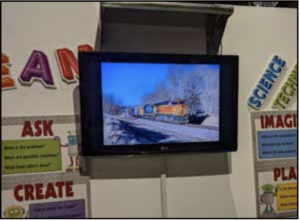
We have a TV, let’s use it!
Above the Lego Layout, there is a TV/DVD monitor. A long-long time ago, we used this to play videos for our guests. The Lego Layout pre- vents easy access the DVD player,but we *CAN* use the monitor to
play slide-shows. It has been proposed that for special events, we create related content that can be shown. For instance, for BNSF Days, we played a BNSF slide show. Amtrak and Union Pacific days are coming in the next two months. Who wants to show their photos?
We can have our talented volunteers create simple slide shows (images only) that we can take turns to show. It takes about a minute and a half to load a USB Drive into to TV and start the slide show, but someone might take the incentive to do this for the benefit of our guests. While initially we could do this for events such as “Union Pacific Days”, there’s no reason why we couldn’t regularly show any railroad-related subject matter. For more info, contact Bill Kepner at cmrmeditor@gmail.com.
Changes for the OC&E
by the Management
Note: This article first appeared in the April 2011 issue of Inside the O&CE, but by popular demand has been updated and reprinted here.
As they say, “Change is always necessary, and always good in the end.” We’ve had a very exciting 12 years modeling the OC&E in the 1975 time period. Even though Colorado railfans hated the Southern Pacific after it took over our beloved Rio Grande, we’ve all learned to love having those great Scarlet Red and Gray diesels haul our OC&E trains over Quartz Mountain. And don’t forget the Great Northern schemes on trains such as the Glow Worm and Coos Bay Ore Trains.
Some of the most famous model railroads including the Virginian and Ohio and the Allegheny Midland have changed the eras they’ve modeled. This has allowed those railroads to model more exciting times and to use equipment the layout’s owner prefers. It gives everybody who built and admired those model railroads a chance to understand the dynamics of how a railroad adapts to changing market positions and modifies their operations as the environment changes around them. As you may know, the V&O and AM effectively merged as a response to the Chessie System merger which posed a major threat to their business.
So too, has the OC&E needed to adapt to external changes. As you learned from the OC&E History presented in the booklet available in the gift shop, 1975 was the pinnacle of the railroad’s existence as it had gained much overhead business when both the SP and GN sought to avoid the significant costs of using their own lines which crossed the Captain Jack Indian Reservation.
After much consideration and consultation with many of the CMRM volunteers, we have decided to move the OC&E era forward to 1995.
One of the major attractions for moving forward 20 years has been the past popularity of our Motor Pool Operations. Jim and Rick Inglis had made the Colorado Model Railroad Museum the premier showcase of the Faller Car/Truck system in this country. Unfortunately, without their enthusiasm over the last few years, this part of the layout has been severely unappreciated. We needed to do something to get our people interested in this setup again. So it only makes sense to expand our use of this system to be the Best in the World. We need to have more volunteers want to “run trucks” than to run trains.
As you know from your history lesson, the Oregon, California, and Eastern was abandoned in April 1990. Therefore as we prepare to model the 1995 era, that means we will need to abandon the OC&E Railroad on the museum layout.
By the time you read this, the majority of the HO track on the layout has been pulled up. A small amount will remain in the Klamath Falls area which will provide the Southern Pacific interchange service to the remaining mills. In Lakeview, we will be lucky to be able to model the meager Great Western Oregon Division, as they were operating the line under con tract between Lakeview and Alturas in 1995. However between the former endpoints of the railroad, the Weyerhaeuser Heavy Haul Road will feature Faller Logging trucks as they haul the remaining timber out of the woods.
The guideway for the Faller trucks has replaced the track. In most places the ballast will remain to provide a roadway for the logging trucks. Since the railroad right of way was built for a single track line, that means the resulting logging roads will also be too narrow for trucks to pass. We have retained the signal system and dispatcher’s panel so that we can safely route trucks over the line.
We’re also changing the way we operate. Safety First has always been the Prime Directive for railroads in this country. After considering comments from our newer operators, we will adapt a more competitive scenario, similar to what you would expect from History Channel’s Ice Road Truckers Reality series. As you might know, Ice Road Truckers portrays a set of misfit truck drivers who are in a contest to haul the most loads over the treacherous roads between Fairbanks and Prudhoe Bay, Alaska. So instead of Safety First, the goal for operations now becomes “Me First.”
Just keeping up with the times!
Logging Trucks Missing!
As this issue goes to press, we have learned that several of the Logging Trucks have gone missing. If you have any knowledge of their where-abouts, please contact the authorities, or email cmrmeditor@gmail.com
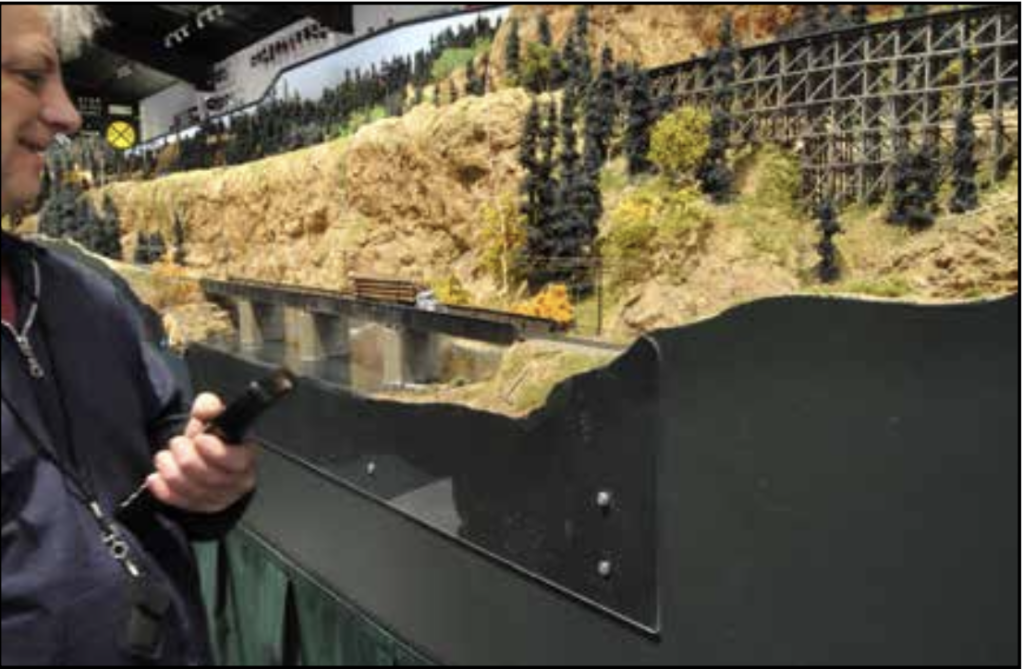
One of the innovations the CMRM crew has developed is DCC control for the Faller Trucks. Here, one of the OC&E Motor Pool operators is running a truck across the Deep Creek River. Note that the NCE throttle controls the trucks much in the same way as the trains; speed, headlights and horn all work in the same manner. We haven’t yet secured a source for realistic sounding truck sound decoders, but Gene thinks he knows how to program the CVs to reproduce a reasonable CAT C15 series engine sound.
The current Faller technology depends on a fixed guideway. The next generation will have remote steering capabilities. That should make things a lot more interesting!
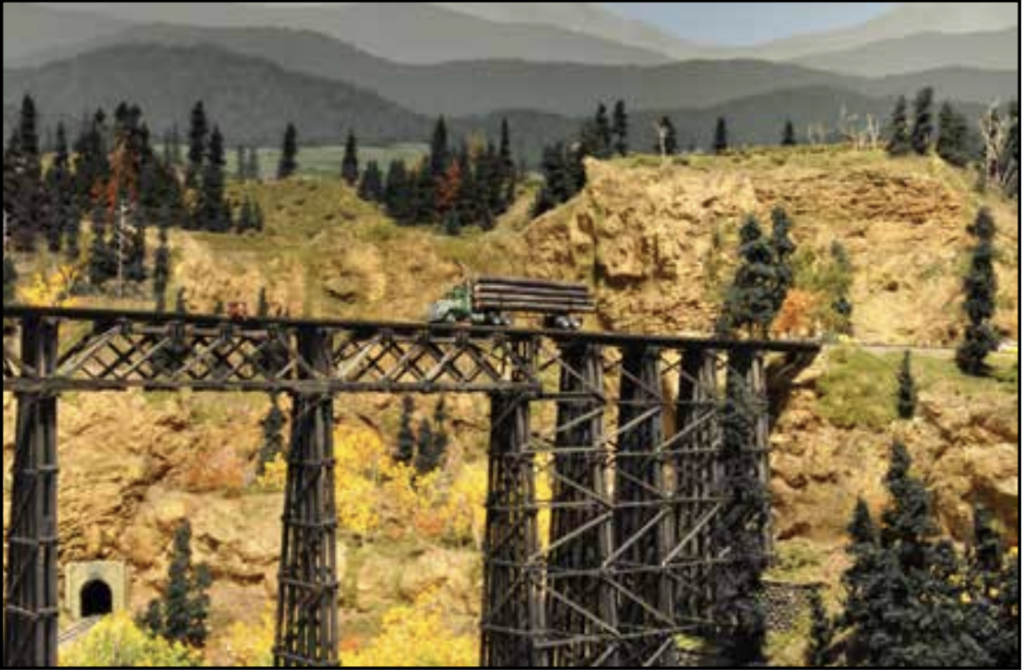
Why is the abandoned right of way being used as a heavy haul truck roadway instead of being converted into a hiking and snowmobile trail? Oregon public roads impose restrictions on oversized and over- weight trucks and by using the former railroad infra-structure, the truckers don’t need to follow those rules; they can pile on as many logs as the driver dares. There are also no speed limits. The drivers now routinely reach 3-digit speeds over the route; here a the truck is doing at least 60 mph over the old railroad trestle, “look Ma, no guardrails!”.
Of course operators do need to be careful; some trucks tend to have Kamikaze tendencies and will crash into things when you aren’t looking.
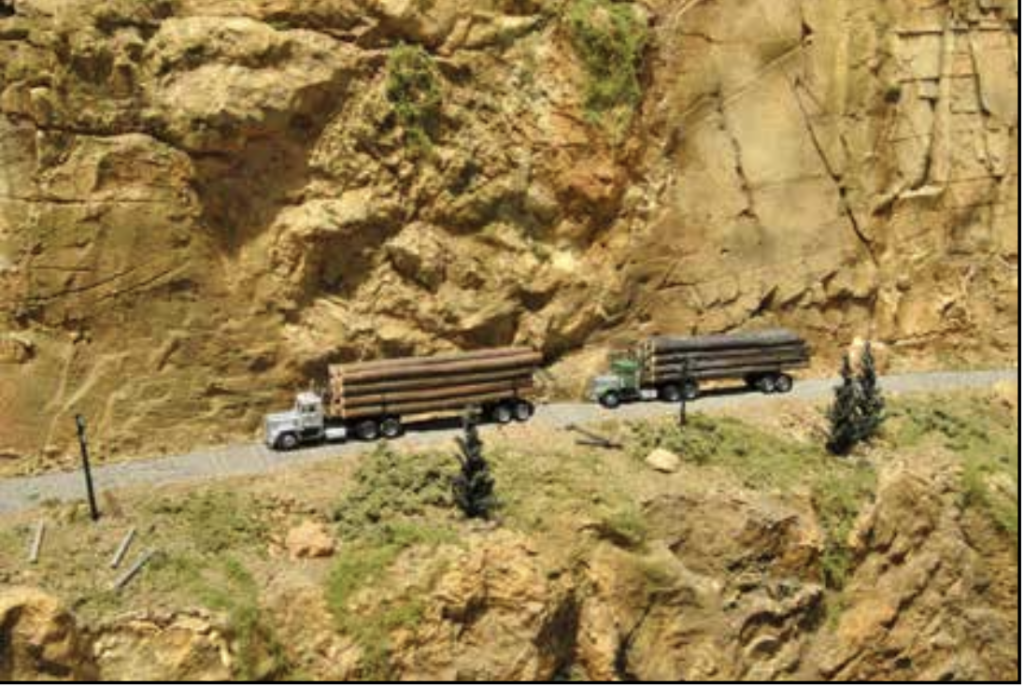
Remember when you got that race car set when you were a kid and wanted to mimic the tricks NASCAR drivers used to nudge their competitors into the weeds? Well that will now be possible when you run your logging trucks. Think of the fun you’ll have running your buddy’s truck off the cliff at Gearhead Mountain! The Competition Committee is in the process of publishing the modification rules, but it is expected you will be able to outfit your trucks with higher voltage batteries (up to a maximum of 9VDC) and be able to fit a remote camera so that the driver’s view can by projected on large monitors around the layout.
We expect this combination to be a big visitor draw; between frequent wrecks and speeding trucks, we’re just providing what the public wants to see.
Operating Sessions are Fun!
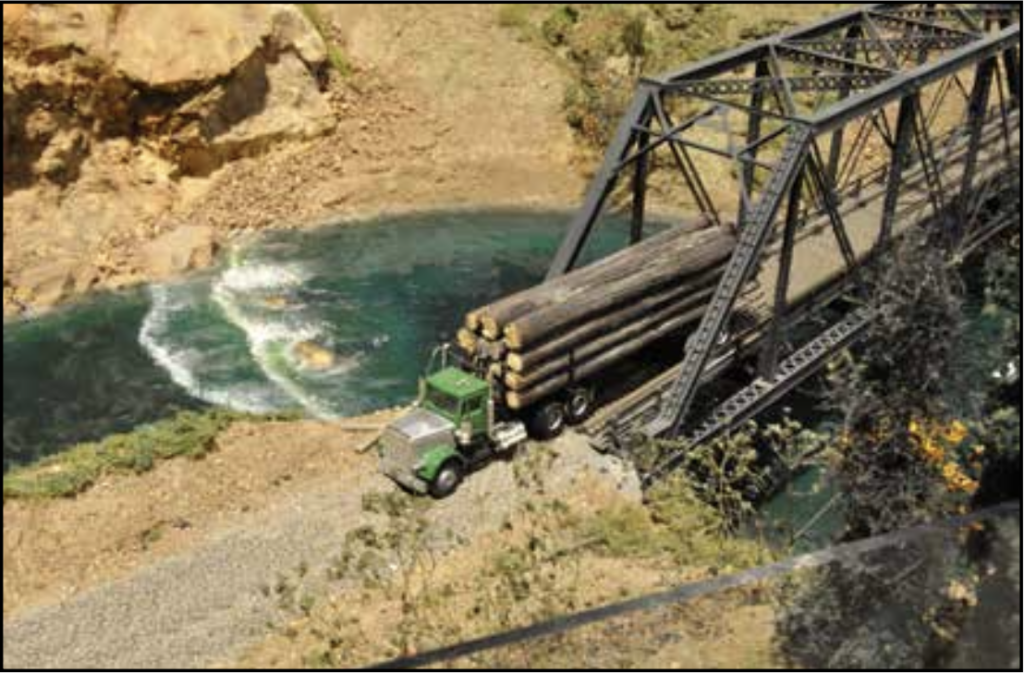
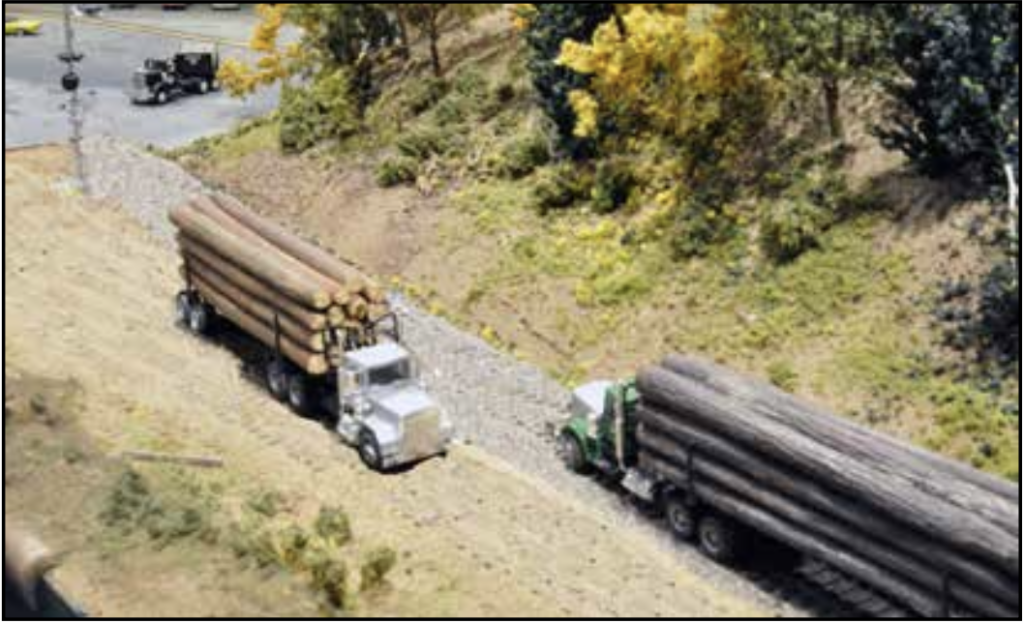
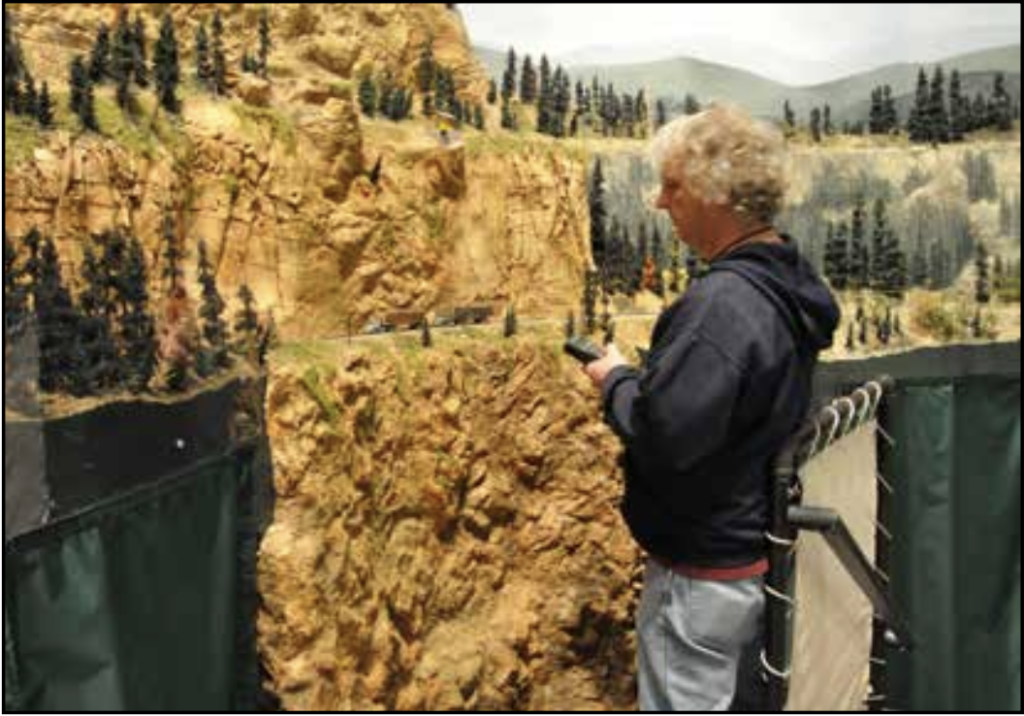
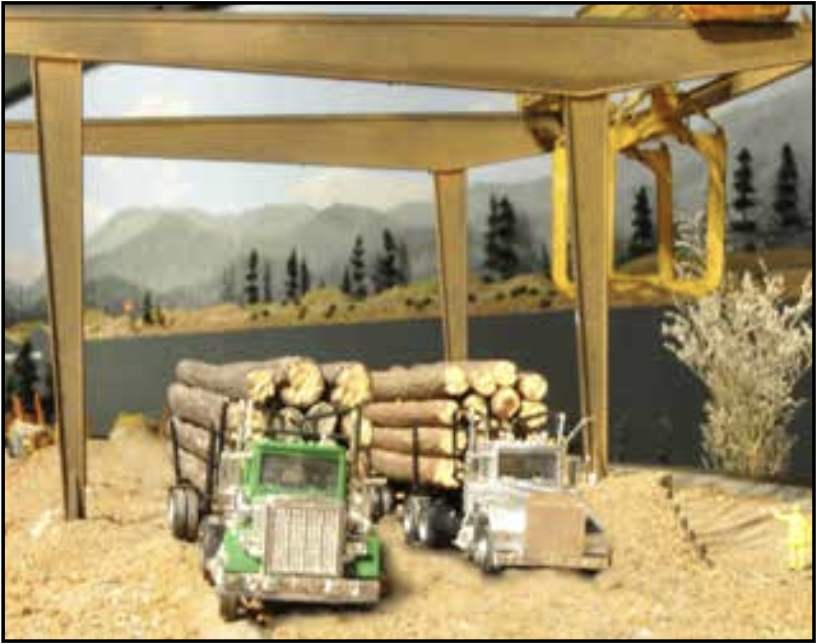
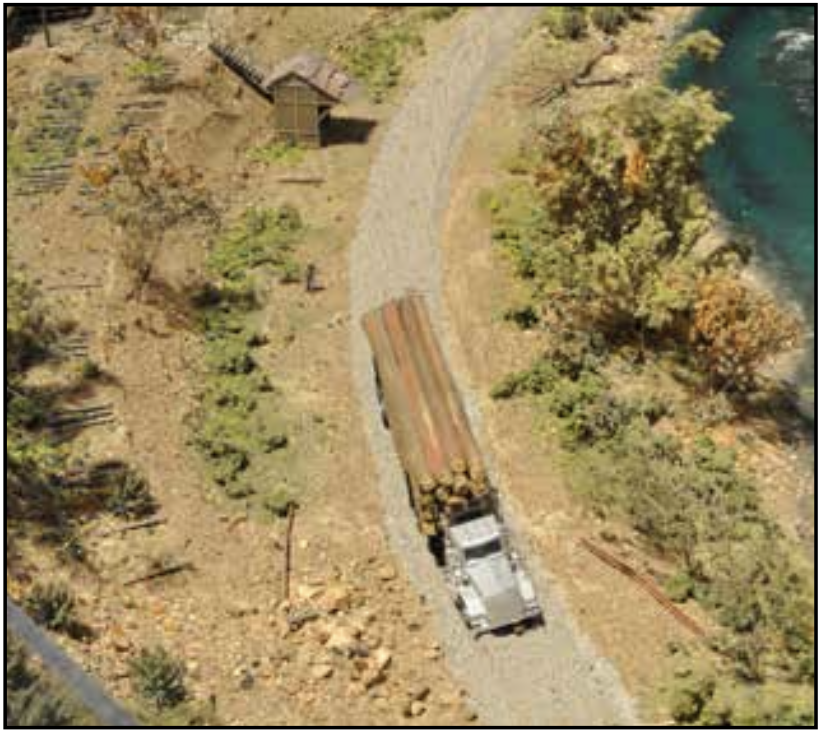
Left top: We won’t always have free-for-all sessions while the museum is open. In order to placate some of the original volunteers, operating sessions will be held as they had been in the past. Snooze. No wonder folks didn’t want to watch those boring trains.
Left middle: Just as the trains did, trucks will need to obey signal indications at each interlocking. A meet is occurring at West Klamath Falls. Only one truck at a time is allowed to climb the loops. Right middle: The Trucks will be loaded at the same load outs as before, but now it will be easier.
Right bottom: Trucks may also feature MU operations. Here one operator is running two trucks at Gearhead Mountain. Of course by now, nobody is fooled. Happy April 1st!
The LocoCab, One Year Later
By Bill Kepner
During the Summer of 2019, the museum obtained Bruce Kingsly’s Ultimate DCC Throttle. It’s a mock up of a F7 Loco- motive Cab that has most of the controls a real locomotive would. A rail-mounted camera is pushed in front of a train and the video is streamed to a monitor mounted inside the “windshield”. We call it the “LocoCab”.
It’s taken a long time to adapt this to the OC&E, but over the past year, we’re now able to use it on a regular basis.
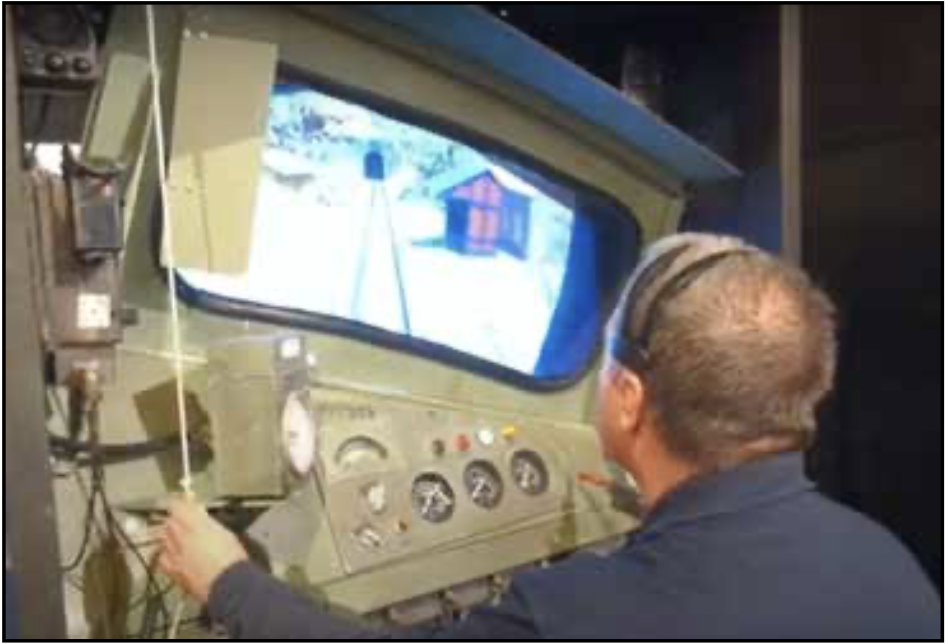
What We’ve Learned:
1. More Prototypical – Everybody has enjoyed running across the railroad using the LocoCab. Most think it is a superior way to operate a train on the OC&E. There’s even one grumpy sole who won’t touch a regular NCE throttle again.
2. Safer – When you have an Engineer’s view, you tend to be much more alert and cautious. There’s really no way you can miss a restrictive signal; they are in your face!
3. More Realistic Speeds – Most trains on the layout are going too fast. The Loco Cab’s speedometer has been cali- brated a using the Boulder Creek RollBy Speedometer. We find that most crews are comfortable running beteen 20 and 30 MPH, which is the proper speed for these trains on the layout. But we find they are running their trains noticeably slower than everyone else.
4. More reliable – The WiFi Interface has been extremely reli- able. The LocoCab uses the same Raspberry Pi as is available for volunteer-owned TCS Throttles. have been no outages experienced. In the past year, there
5. Improve Guest Experience – It’s fairly easy for a new opera- tor to learn how to use the controls. We had an instance last December, when a relief crew was needed. With all the volunteers busy, we picked two random guests to sit in the engineer’s sear and continue the operation the rest of the way. An experienced conductor helped them, but they quickly adapted and had absolutely no problems.
5. Easier Track Inspection – Using the LocoCab is a great way to look for parts along the right of way that may have been dropped by a previous train. We have also spotted several track “defects” that were reported and fixed before they caused a derailment
7. Better Views: There are several fully sceniced areas on the layout that are not visible from the normal aisles. The canyon between Bly and Quartz is one of the most scenic areas on the railroad. And the only way you can see it is by riding in the locomotive cab.
8. Added Realism – There doesn’t seem to be a problem having a realistic amount of momentum and using the brakes for controlling the speeds. Engineers are advised to perform a running brake test after leaving the terminal.
9. Positive Guest Experience – Our guests love it! We have had many watch intently as the engineer runs the train through the loops. They are often amazed how many tunnels there are between Klamath Falls and Sprague River siding.
10. Founder’s Approval – When Dave Trussell was the engineer, his first remark was “If I would have known guys you were going to do this, I would have finished the insides of the tunnels.” Dave thoroughly enjoyed his trip across the railroad, and even for him, it was a brand new experience!
11 Stuff to be Careful: Restricting signals definitely need to be obeyed! There are several places on the OC&E where signals are hard to see and there could be cases where an engineer wouldn’t be able to stop in time if there was an absolute stop signal and he or she wasn’t obeying the appro- priate speed rules. We will take care of trees are blocking the view of the signal head, but there’s also several places where a signal should be relocated because it is placed wrong. Until that happens, slow orders have been posted for the WP 913 crews.
Experienced OC&E crews can be trained to operate the Loco- Cab. Apply by emailing cmrmeditor@gmail.com
Rocky Mountain Train Show
On the weekend of April 1-2, 2023, the museum had two booths at the Rocky Mountain Train Show at the Denver National Western Complex. In the first, we had many items for sale that had been donated and de-accessed from our collection. The second, was the “Build a Lego Train” exhibit, where we gave kids the chance to build a Lego Car, and then we would run it on a short loop of track for them to see.
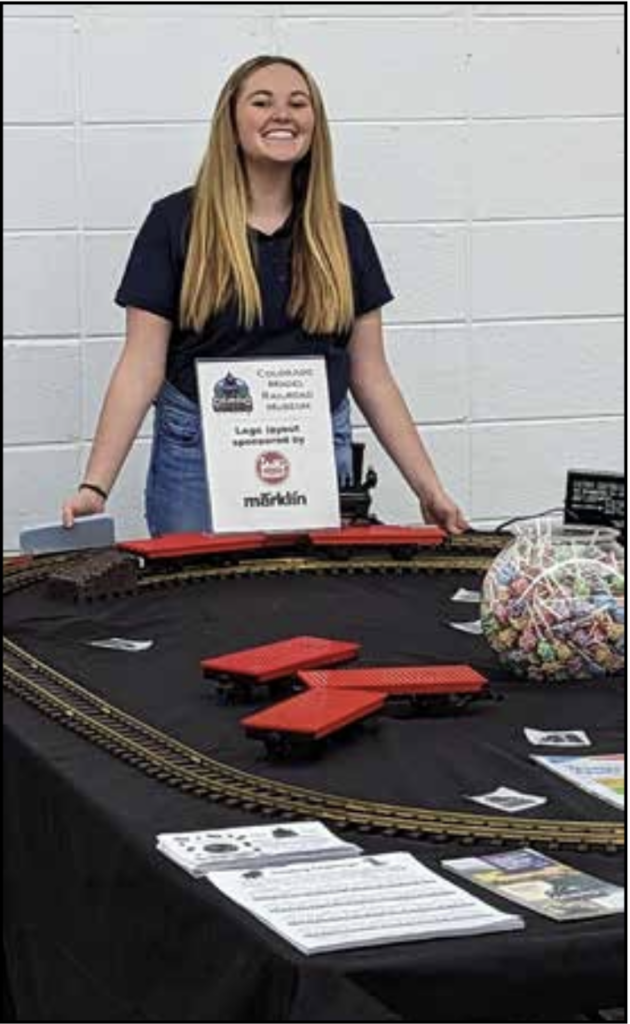
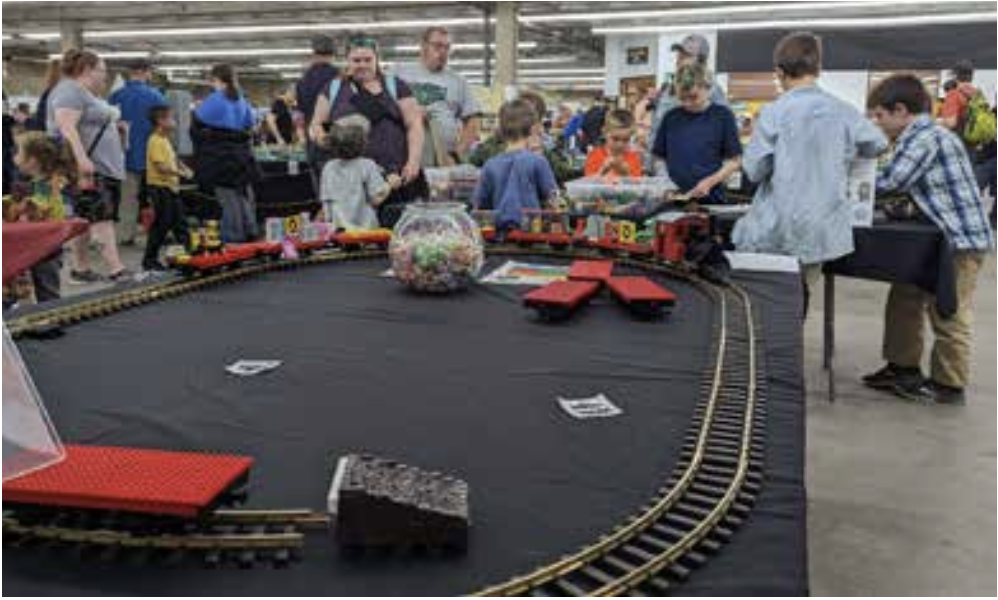
Throughout the show, there were busy and not-so-busy times. Saturday morning is typically when many railroad enthusiasts come to find the “best deals”. Saturday after- noon sees a wide variety of folks, and we found things never really slowed down until after the show closed. Sunday morning was dead, but started building by noon. By 2PM, you would have believed every child in Denver was at the show, it was so busy
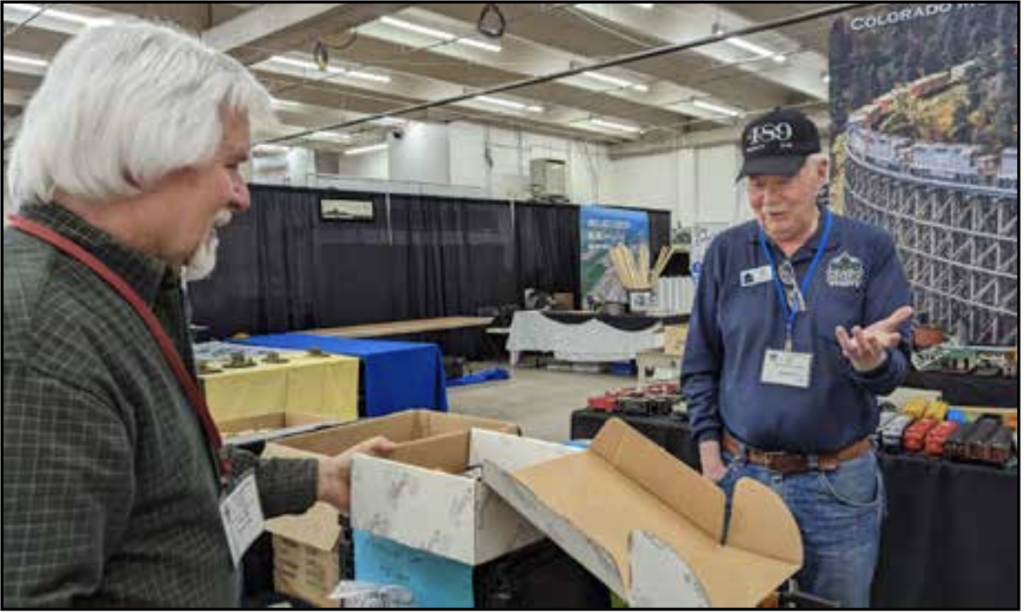
Many museum volunteers helped the museum staff with the show. Below, Jon Myers helps Chuck Call organize items for sale.
New Locomotives for the Sycan Branch
By Steve Watrous
As much as possible, the OC&E Layout tries to demonstrate the railroad as it might have looked in 1975. But we’ve always received comments from our guests that they enjoy steam engines and wonder why we can’t run them more often.
Fortunately, deep in the woods in southern Oregon, there were branch lines that might have had active steam engines running into the 1960’s and maybe even later. Nobody knows for sure, back before the internet, nobody was watching. But whether there was steam or not, let’s pretend there was.
We are happy that two new steam locomotives are now stationed at Sycan Junction. These are models of locomotives that are native to the Northwest Logging railroads, and are actually still active in the 21st Century.
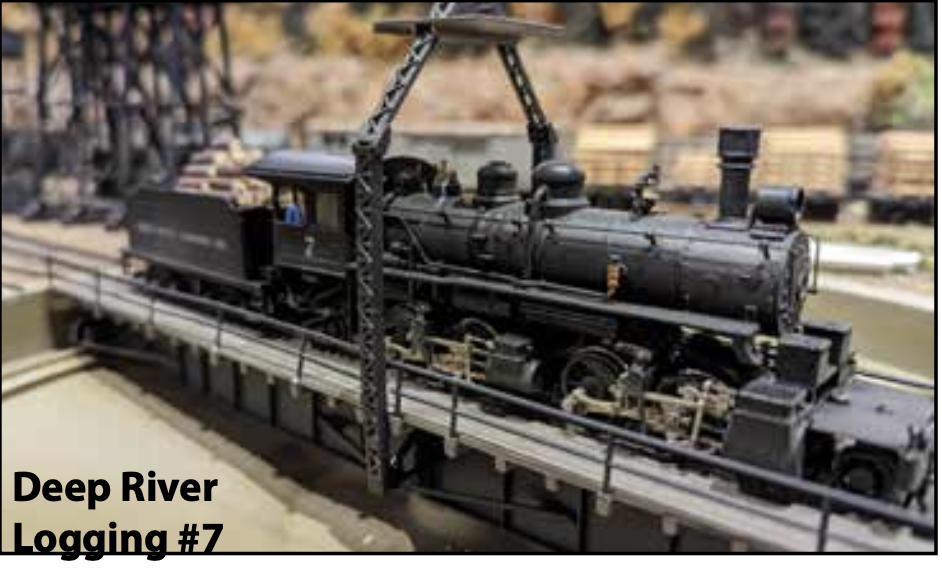
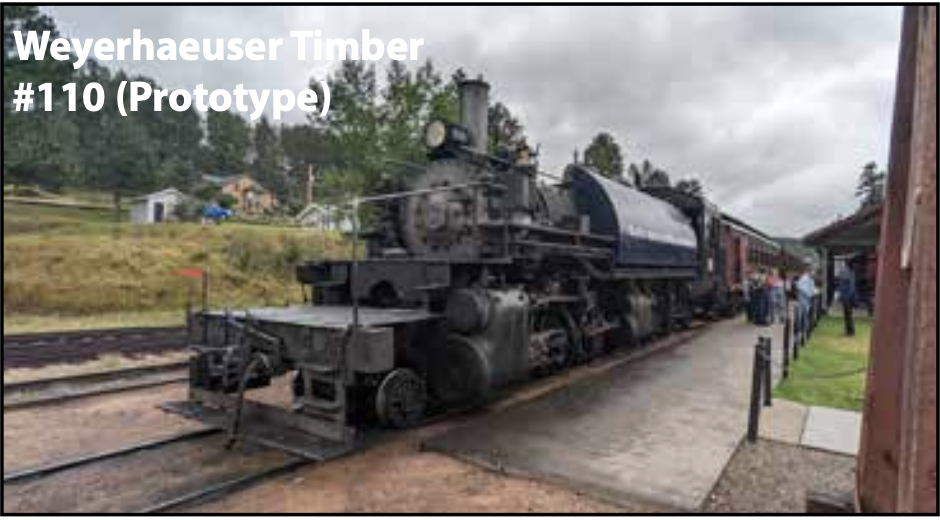
Skookum (Deep River Logging #7)
This locomotive was built by Baldwin and has a unique 2-4-4-2 wheel arrangement. It didn’t work out for its first two owners, but then was sold it to the Deep River Logging Railroad Company. Working poorly-laid logging lines in 1955 the locomotive derailed in the middle of the forest – and was left there. Abandoned. Tracks were torn up and it was left to rot in the woods. The Niles Canyon Railway eventually retrieved it and after a 15 year-long restoration, it now operated on their track- age in the San Francisco Bay Area.
Skookum was a nickname given by Deep River Logging company. Skookum is a Chinook word meaning strong or monstrous. Being much bigger than the typical Shays or Heislers normally found on logging railroads, it seemed it wasn’t quite the best steam locomotive design to work on poorly laid track in the deeps woods of the Pacific Coast. But it should do just fine on the well-maintained track of the OC&E.
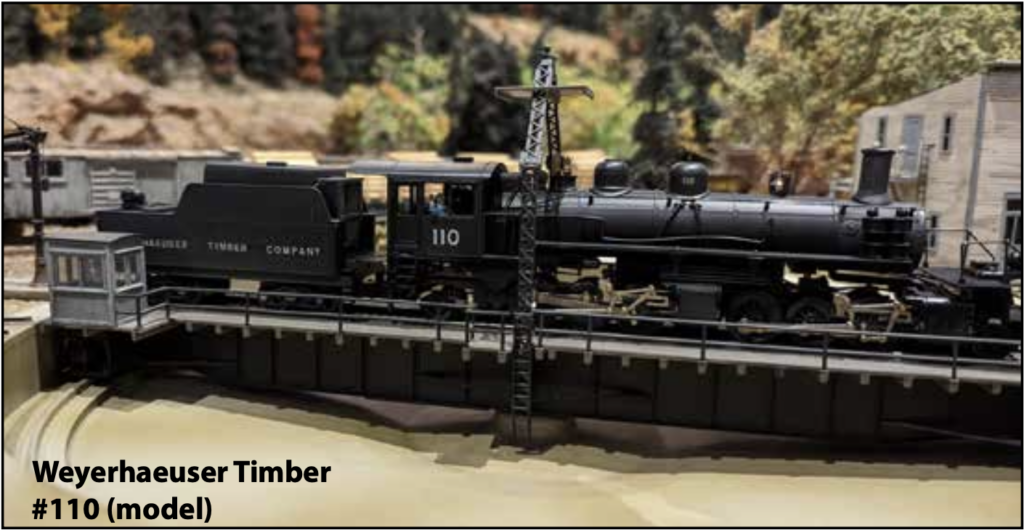
Eventually in 1999, it was sold to the Black Hills Central Railroad, a tourist railway at Hill City, South Dakota. It returned to steam in January 2001, and is currently one of only two operational Logging Mallets in North America, including sister locomotive 108 at Black Hills Central which was restored in 2020. It has been returned to it’s original tank locomotive configuration.
N Scale Layout Update
Bill Kepner, N Scale Team Lead
A year ago, the museum obtained a fully built, scienced, and operating N scale layout, along with a sizable collection of quality locomotives and rolling stock. The intention was to re- assemble it in the Lyster Annex and open the area to visitors throughout the year. It would be set up so that our guests, particularly the younger ones, could have a chance to run trains under supervision.
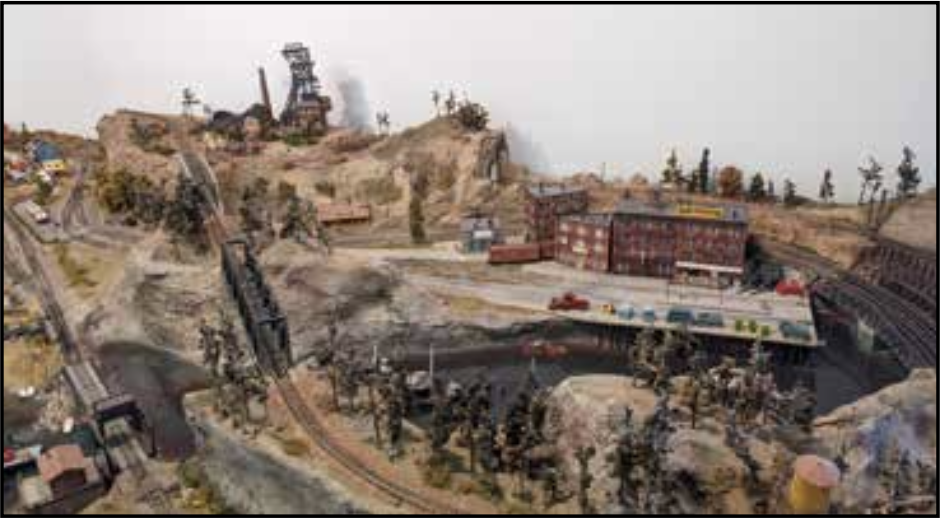
We really see this as an opportunity to enhance the museum’s visitor experience by showing a model railroading experience that is more achievable by most of our visitors. They would be able to have fun by participation, instead of just observing from a distance. All this helps achieve our museum values! (See page 14).
It’s also a chance to show something other than an HO model railroad, and highlight N Scale’s advantages over HO.
While the layout doesn’t have a specific prototype, it does remind some of us of the region around Kansas City. Since some museum volunteers would like to have more Santa Fe operations at the museum, we have tentatively named the layout the “River City and Santa Fe”.
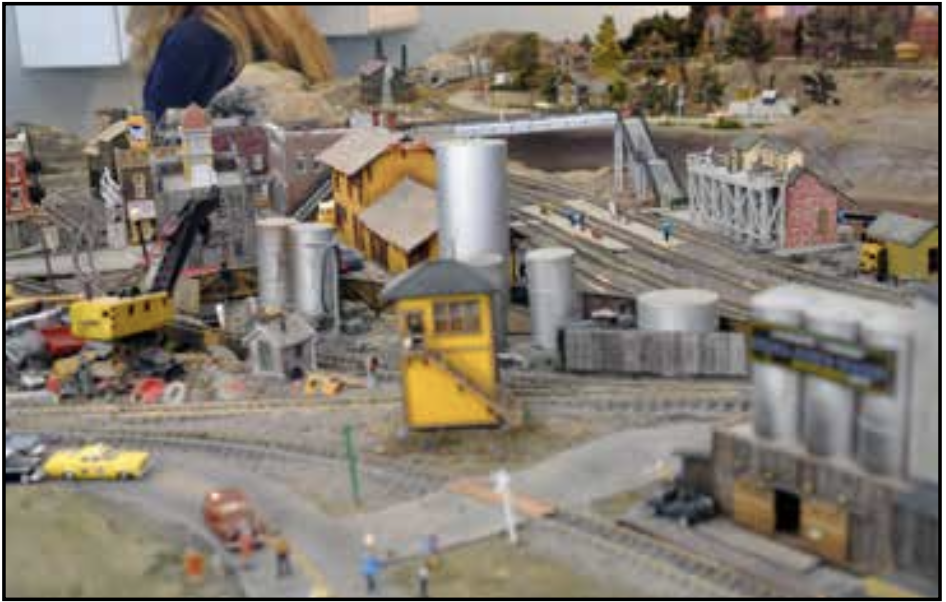
However, as we started preparing it for operations, we realized that the layout area was not suitable for the public on a regular basis and that significant investments would need to be made to do so. What started out as a simple, “Can we have a heater?” turned into a major 5-figure expansion project. We quickly realized that it wasn’t going to be a simple or quick project.
We had wanted to have the layout assembled and operational sometime late this Spring so that could have it on display and available for the Youth Program this summer. There is now a desire by the museum board to work on a longer-range plan for a suitable space for this and other additional exhibits. As you can imagine from reading the article at the beginning of this newsletter, there are a lot of other projects in queue, so this won’t happen overnight.
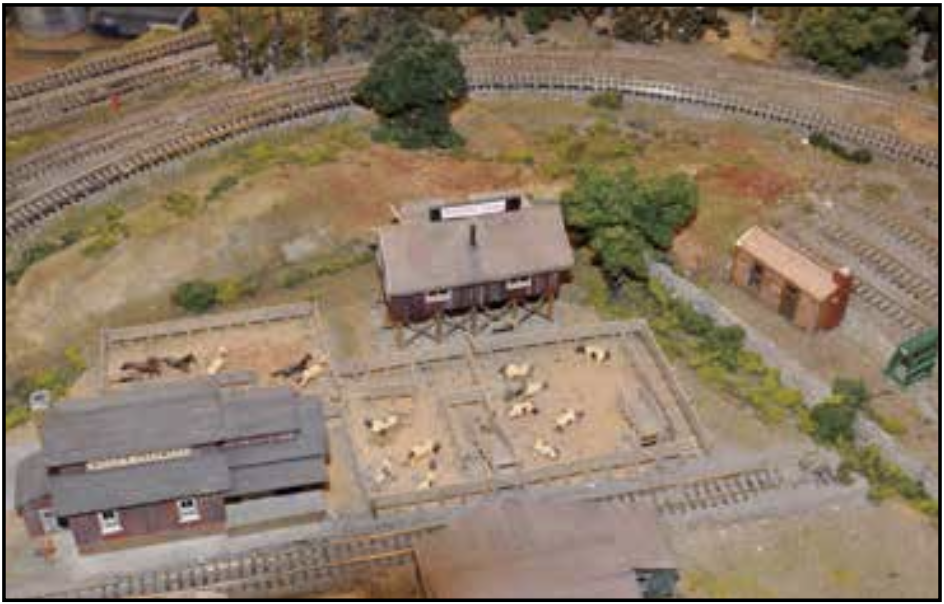
Since these new plans will probably require moving the layout to a new location, it doesn’t make a lot of sense to continue with the original plans. What we can do is continue the work to make it operable, and make some improvements, such as adding a staging yard. We can also re-locate scenery items that were removed for shipping, and in general clean and prepare everything for the future.
The layout had an older two-aspect relay-driven signal system. We would like to re-engineer this system using the state-of- the-art Layout Command Control System, Since the layout era is more current than the OC&E, would might consider using a modern dispatching system, such as the Computer Automated Traffic System, developed by Rodney Black.
We are starting to see interest from both current museum volunteers and some new people in helping with this project. While to this point, most of the work has been done by just a few volunteers, we hope to involve many more and give everybody a chance to have ownership in the project. Work Sessions will be held on Fridays and Saturdays this Spring. Contact cmrmeditor@gmail.com if you would like to help.
Youth Program
The Colorado Model Railroad Museum is excited to announce a Reading Challenge that asks students to read 20 minutes a night for 20 consecutive days. In return, the student receives free admission into the Museum and claims a prize. The Museum has so far had an excellent response to the Reading Challenge, and we are excited to continue growing our reading program in the future.
Both and English and Spanish version of our Reading Challenge are accessible at our Museum, within the twelve schools of District 6, six libraries located in Greeley, Johnston, Kersey, and Eaton, The Rocky Mountain Train show in Denver, as well as a local book store in Greeley called Midnight Oil. Please call the museum at 970-392-2934 and ask Madison Castle for more information or stop by the museum and pick up the form for tracking your reading.
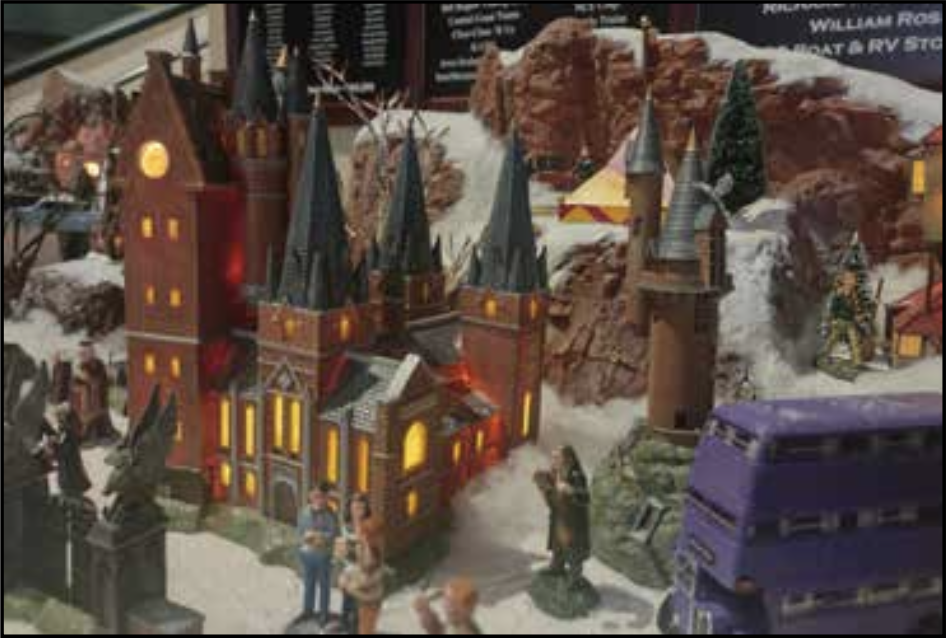
scenery.
Operations and Care Reminders Care of Track Switch Throws
Steve Palmer, OC&E Layout Manager
The Manual Track Switch Throws in the yards and staging are very fragile and need to be operated correctly.
When you throw a switch, the lever should be moved until it is sticking straight out parallel to the ground.
Do NOT push the lever down to the ground. Pushing the lever all the way down puts excessive pressure on the pivot point and on the connection to the actual switch. These are small thin parts that are easily broken.
We have seen increased damage to the Switch Throws and it is time-consuming and difficult to repair, so thank you for your caution in the future.
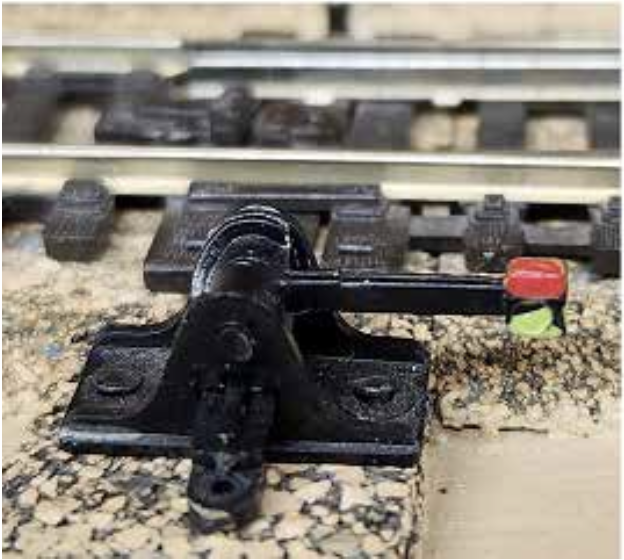
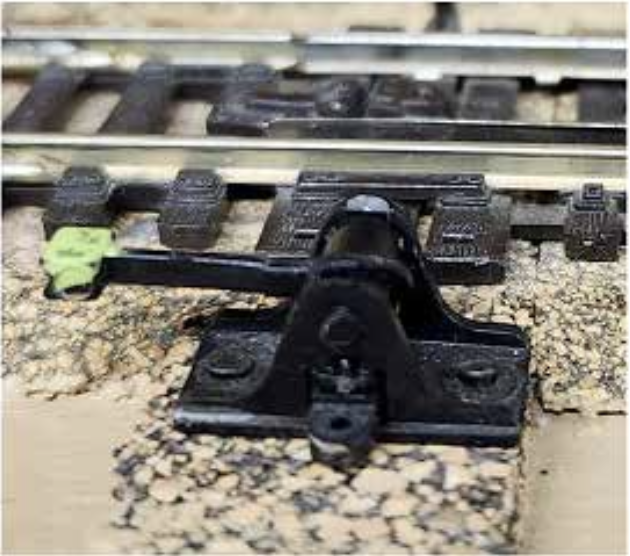
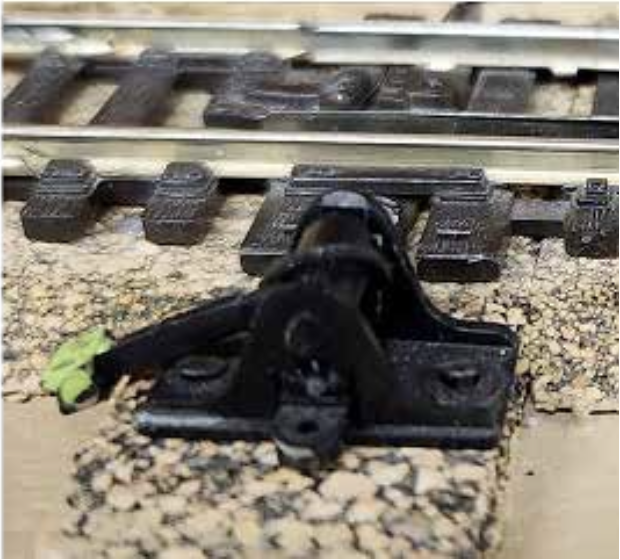
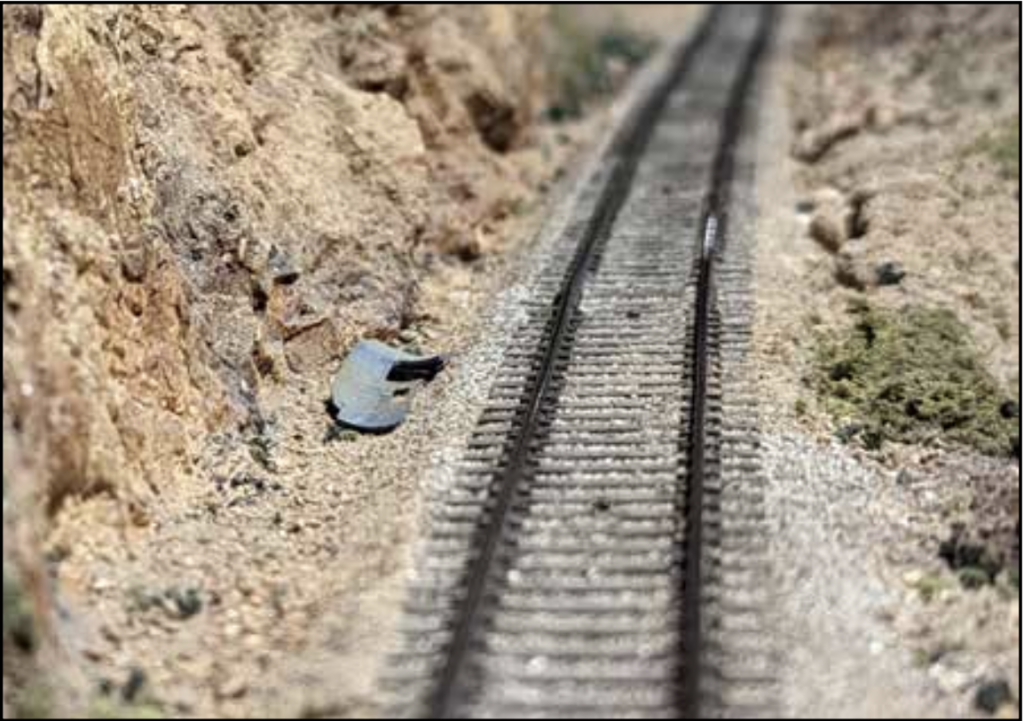
Anyone lose a snowplow off their locomotive? The LocoCab crew found it along the right of
way between Sprague River and the loops.
